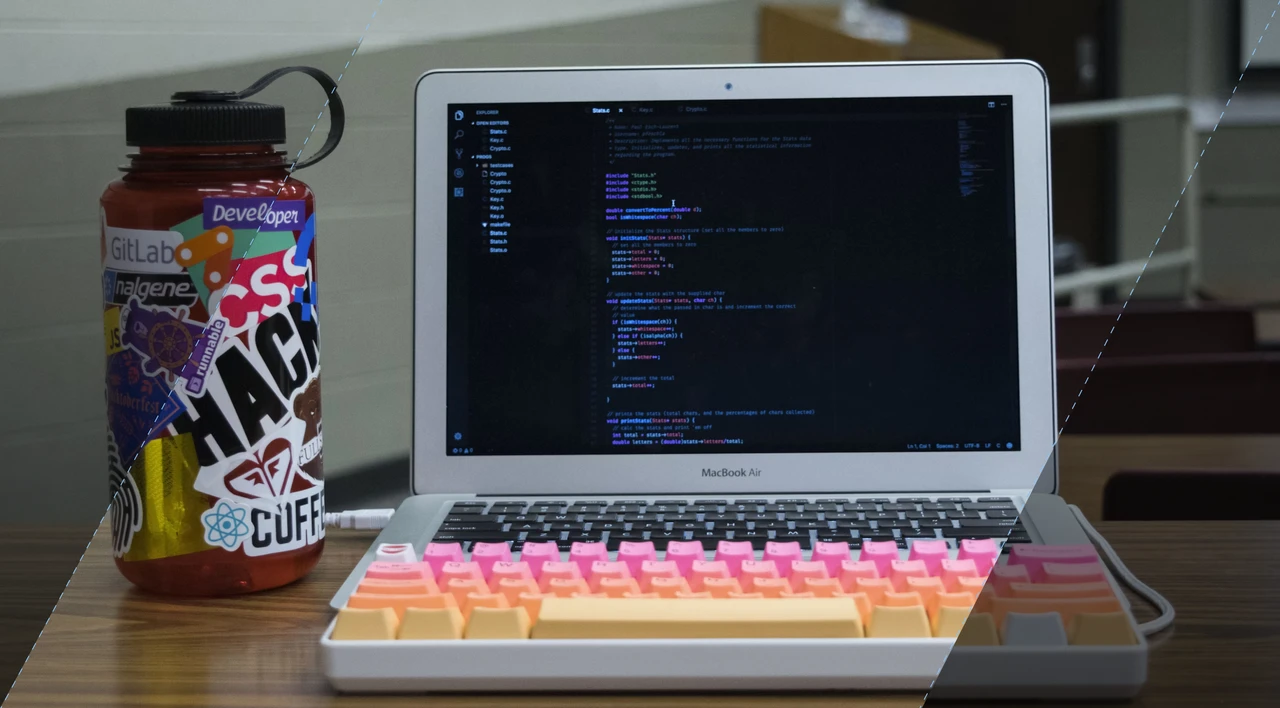Contents
Contents
In a world where wireless technology has become an integral part of our daily lives, one question remains: what’s the deal with Bluetooth frequency? Is it just another buzzword, or does it hold the key to seamless connectivity? Let’s delve into the intricacies of Bluetooth frequency and its vital role in our wireless world, especially as the global Bluetooth 5.0 market is registering a robust growth rate CAGR of 11.0% from 2022 to 2027.
Key Takeaways:
- Bluetooth frequency plays a crucial role in enabling wireless connectivity.
- Bluetooth operates in the 2.4 GHz ISM frequency band.
- Frequency hopping spread spectrum (FHSS) is used by Bluetooth to minimize interference.
What is Bluetooth?
Bluetooth is a wireless communication technology that allows devices to exchange data over short distances. It was first introduced in 1994 by Ericsson, a Swedish telecommunications company, and has since become a widely adopted standard for wireless connectivity.
Brief History of Bluetooth Technology
Bluetooth technology was developed as a solution to the problem of connecting devices wirelessly. Prior to Bluetooth, connecting devices required cables or other physical connections, which limited mobility and convenience. The name “Bluetooth” was inspired by King Harald Bluetooth, a Danish king known for his ability to unite people and foster communication.
Differences With Other Wireless Technologies
Compared to other wireless technologies such as Wi-Fi and cellular networks, Bluetooth is designed for short-range communication, typically up to 30 feet. While Wi-Fi and cellular networks offer wider coverage, they consume more power and are more complex to implement. Bluetooth, on the other hand, operates in the 2.4 GHz frequency range and uses a technique called frequency hopping spread spectrum (FHSS) to minimize interference from other devices.
|
Wireless Technology |
Range |
Power Consumption |
Implementation Complexity |
|
Bluetooth |
Short-range (up to 30 feet) |
Lower |
Easier |
|
Wi-Fi |
Long-range |
Higher |
More complex |
|
Cellular Networks |
Wide coverage |
Higher |
More complex |
The Bluetooth Frequency Range
Bluetooth operates in the 2.4 GHz ISM (industrial, scientific, and medical) frequency band, specifically from 2400 to 2483.5 MHz. This frequency range is globally available, making Bluetooth devices compatible and interoperable worldwide.
The choice of the 2.4 GHz band for Bluetooth was influenced by factors such as availability, compatibility, and the need for a balance between range and throughput. Compared to other frequency bands, such as the 900 MHz and 5 GHz bands, the 2.4 GHz band offers a good balance between range and data rate, making it suitable for most Bluetooth applications.
How Bluetooth Uses Frequencies to Communicate
In order to facilitate wireless communication, Bluetooth utilizes a technique known as frequency hopping spread spectrum (FHSS). This method is essential for enabling seamless connectivity over the 2.4 GHz frequency band.
Overview of FHSS
FHSS involves the rapid and sequential switching of frequencies within the 2.4 GHz band. By constantly hopping between frequencies in a predetermined sequence, Bluetooth devices can avoid interference from other devices operating in the same frequency band.
Benefits of FHSS in Bluetooth connections
There are several key benefits to utilizing FHSS in Bluetooth connections. One of the most important advantages is improved reliability. By rapidly switching frequencies, Bluetooth devices can minimize the impact of interference, ensuring a stable and consistent wireless connection.
Additionally, FHSS enables increased resistance to interference from other wireless devices, further enhancing the overall performance of Bluetooth connections. This is crucial in environments where multiple devices are operating within close proximity, such as crowded offices or busy public spaces.
Furthermore, the use of FHSS allows for better coexistence with other wireless devices. Bluetooth can peacefully coexist with other wireless technologies, such as Wi-Fi, without causing significant interference. This ensures that users can enjoy uninterrupted wireless connectivity without compromising the performance of other devices.
Bluetooth Versions and Frequency Enhancements
In its evolution, Bluetooth technology has undergone various updates and enhancements, offering improved functionality and features. Different versions of Bluetooth have been introduced, each incorporating advancements and enhancements to better meet the needs of users.
Overview of Different Bluetooth Versions
Here is a brief overview of the different Bluetooth versions that have been released:
- Bluetooth 1.0 and 1.1: These were the initial versions of Bluetooth technology, providing basic wireless connectivity with limited data transfer rates and range.
- Bluetooth 2.0: With the introduction of Enhanced Data Rate (EDR) technology, Bluetooth 2.0 significantly increased data transfer rates, allowing for faster and more efficient wireless communication.
- Bluetooth 3.0: The release of Bluetooth 3.0 brought High-Speed (HS) technology, enabling even faster file transfers and improved performance.
- Bluetooth 4.0: Bluetooth 4.0 introduced Low Energy (LE) technology, which revolutionized Bluetooth connectivity by reducing power consumption and enabling longer battery life for Bluetooth devices.
- Bluetooth 5.0: The introduction of Bluetooth 5.0 brought several enhancements, including longer-range capabilities, higher data transfer rates, and overall improved performance.
- Bluetooth 5.1 and 5.2: These newer versions further enhanced the range, performance, and security of Bluetooth connections, ensuring a more reliable and efficient wireless experience.
Frequency Enhancements in Newer Versions
Along with the improvements introduced in each Bluetooth version, there have also been frequency enhancements to optimize wireless communication. These frequency enhancements include:
- Improvements in FHSS: Bluetooth versions have implemented advancements in FHSS technology, enhancing the efficiency and reliability of Bluetooth connections by reducing interference from other devices operating in the same frequency band.
- Adaptive Frequency Hopping: Some newer Bluetooth versions have introduced adaptive frequency hopping, allowing devices to dynamically adjust their hopping patterns based on real-time conditions, further optimizing communication and minimizing interference.
These frequency enhancements contribute to the improved performance, stability, and security of Bluetooth connections, making them more robust and reliable in various wireless environments.
|
Bluetooth Version |
Main Enhancements |
|
Bluetooth 1.0 and 1.1 |
Basic wireless connectivity with limited data transfer rates and range |
|
Bluetooth 2.0 |
Introduction of Enhanced Data Rate (EDR) technology, significantly increasing data transfer rates |
|
Bluetooth 3.0 |
High-Speed (HS) technology enabling faster file transfers |
|
Bluetooth 4.0 |
Low Energy (LE) technology, reducing power consumption and enabling longer battery life |
|
Bluetooth 5.0 |
Longer range capabilities, higher data transfer rates, and improved performance |
|
Bluetooth 5.1 and 5.2 |
Enhanced range, performance, and security of Bluetooth connections |
Real-World Applications of Bluetooth Technology
Bluetooth technology has revolutionized wireless communication by finding widespread applications in various everyday devices. Its seamless integration enhances our daily lives, providing convenient wireless connectivity. Let’s explore some examples of Bluetooth in everyday devices and discuss future applications and trends.
Examples of Bluetooth in Everyday Devices
Bluetooth technology has been incorporated into numerous devices that we use daily, making our lives more connected and efficient. Here are some examples:
- Smartphones and tablets: Bluetooth allows for wireless audio streaming, file sharing, and device synchronization.
- Laptops and computers: Bluetooth enables wireless peripherals such as keyboards, mice, and speakers to connect seamlessly.
- Wireless speakers and headphones: Bluetooth provides a hassle-free way to enjoy music and audio without the need for cables.
- Smartwatches and fitness trackers: Bluetooth connectivity allows wearable technology to sync with smartphones and provide real-time notifications and health data.
- Home automation systems: Bluetooth integration enables control over smart home devices, such as lighting, thermostats, and security systems.
- Automotive systems: Bluetooth enables hands-free calling, audio streaming, and integration with in-car entertainment systems.
These are just a few examples, and Bluetooth technology is present in many other devices, including gaming consoles, wearable tech, medical devices, and more.
Future Applications and Trends
Looking ahead, Bluetooth technology is expected to further expand its applications, driven by emerging trends and advancements:
- Internet of Things (IoT): Bluetooth’s low-power capabilities make it ideal for connecting and controlling IoT devices, enabling seamless communication and automation.
- Smart homes: Bluetooth allows various smart home devices to connect and communicate, creating a more integrated and convenient living environment.
- Wearable devices: Bluetooth plays a crucial role in connecting wearable devices to smartphones and other smart devices, facilitating data exchange and functionality. The global smartwatch market is anticipated to exceed $97.52 billion by 2028.
- Connected cars: Bluetooth technology is used extensively in automotive systems, and as vehicles become more connected, Bluetooth will play an even more significant role in enhancing in-car communication and entertainment.
These trends highlight the continuous development of Bluetooth technology and its integration with other wireless technologies, such as Wi-Fi and cellular networks. As a result, we can expect even more innovative and convenient wireless communication solutions in the future.
|
Device Category |
Examples |
|
Smartphones and tablets |
Apple iPhone, Samsung Galaxy Tab |
|
Laptops and computers |
Dell XPS, HP Pavilion |
|
Wireless speakers and headphones |
JBL Flip, Sony WH-1000XM4 |
|
Smartwatches and fitness trackers |
Apple Watch, Fitbit Charge |
|
Home automation systems |
Google Nest, Philips Hue |
|
Automotive systems |
Tesla Model 3, BMW iDrive |
Conclusion
Bluetooth frequency is an essential component of our wireless world, enabling seamless connectivity and enhancing our daily lives. Throughout this guide, we have explored the fundamentals of Bluetooth technology, the frequency range utilized by Bluetooth, and how frequencies are employed for communication.
We have also delved into the different iterations of Bluetooth, highlighting the frequency enhancements introduced over the years. Additionally, we have examined the practical applications of Bluetooth technology across a wide range of devices, from smartphones and headphones to home automation systems and healthcare devices.
If you’re looking for help with your IoT project, read more about Flatirons’ custom IoT development services.
Frequently Asked Questions
What is Bluetooth?
Bluetooth is a wireless communication technology that allows devices to exchange data over short distances.
What is the frequency range used by Bluetooth?
Bluetooth operates in the 2.4 GHz ISM (industrial, scientific, and medical) frequency band, specifically from 2400 to 2483.5 MHz.
How does Bluetooth use frequencies to communicate?
Bluetooth uses a technique called frequency hopping spread spectrum (FHSS) to communicate over the 2.4 GHz frequency band. FHSS involves rapidly switching frequencies within the 2.4 GHz band in a predetermined sequence.
What are the benefits of FHSS in Bluetooth connections?
The benefits of FHSS in Bluetooth connections include improved reliability, increased resistance to interference, and better overall performance.
What are the different versions of Bluetooth?
Bluetooth technology has evolved over the years, with different versions offering various improvements and enhancements. The versions include Bluetooth 1.0, 1.1, 2.0, 3.0, 4.0, 5.0, 5.1, and 5.2.
What are some real-world applications of Bluetooth technology?
Bluetooth technology has found widespread applications in various everyday devices, including smartphones, tablets, laptops, wireless speakers, headphones, smartwatches, fitness trackers, home automation systems, and automotive systems.
What are the potential challenges with Bluetooth frequency?
Bluetooth can be susceptible to interference from other wireless devices operating in the same frequency band, which can affect the quality and stability of Bluetooth connections.
How can I optimize Bluetooth performance?
Tips for optimizing Bluetooth performance include keeping devices updated, reducing interference from other wireless devices, and ensuring that devices are within the recommended range for reliable communication.
IoT Development Services
Harness the power of IoT with Flatirons Development1 innovative IoT development services.
Get the CEO's Take
Handpicked tech insights and trends from our CEO.
IoT Development Services
Harness the power of IoT with Flatirons Development1 innovative IoT development services.
Get the CEO's Take
Handpicked tech insights and trends from our CEO.

Enterprise Computing: Transforming Business Operations
Flatirons
Oct 09, 2025
Explore the Top Embedded Systems Examples of Today
Flatirons
Oct 04, 2025
Best Manual Testing Tools to Boost Your Software Quality
Flatirons
Sep 28, 2025
Digital Product Development: Enhance Your Business Offerings
Flatirons
Sep 12, 2025
React SEO: Optimize Your React Apps for Search Engines
Flatirons
Sep 07, 2025
Will Software Engineers Be Replaced by AI?
Flatirons
Aug 31, 2025